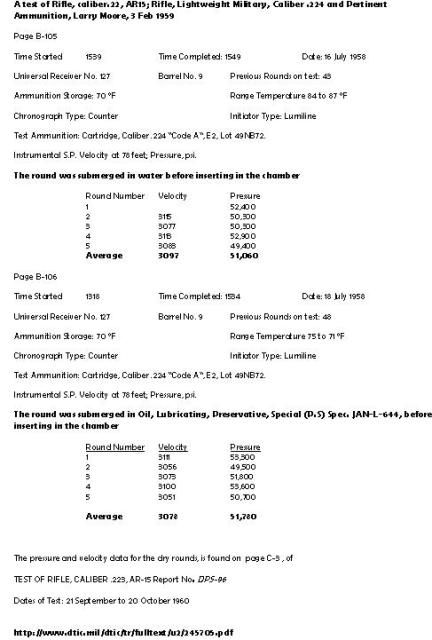Mike Irwin
Staff
"Millions of moly lubed bullets have been fired in rifle matches and never a pressure problem reported."
Do moly lubed bullets weld themselves into the case neck?
No.
Once again, I think you are either overlooking or ignoring critical items in the issue chain.
"Hatcher never blamed lubricated cartridges in service rifles, it was all about greased bullets."
WHEN IT WAS DONE IN CONJUNCTION WITH BULLETS THAT HAD BEEN COATED WITH TIN AND WHICH WERE WELDED INTO THE CASE NECK.
I'll repeat that because I'm not sure you're making that critical association...
WHEN IT WAS DONE IN CONJUNCTION WITH BULLETS THAT HAD BEEN COATED WITH TIN AND WHICH WERE WELDED INTO THE CASE NECK.
It was known that the bullets were welding into the case necks and were raising pressures.
"He personally shot or oversaw service rifles that had oiling pads or used microcrystalline wax as a cartridge lubricant. The most well known was the Pedersen rifle."
Yes. That the ONLY way the Pedersen rifle would function. Otherwise it ripped the heads off the cases because Pedersen neglected to recognize the need for a slow period of initial extraction.
And finally, once again, you are either missing or ignoring the differences in operating systems that we are talking about.
A bolt action mechanism takes the ENTIRE pressure cycle without movement.
A semi-automatic does not.
Thus their reaction to the pressure cycle is different and it cannot be said that if something happens in one system, it will happen in the other.
As I noted, I am away from home and I don't have access to my Hatcher's Notebook at the moment.
Do moly lubed bullets weld themselves into the case neck?
No.
Once again, I think you are either overlooking or ignoring critical items in the issue chain.
"Hatcher never blamed lubricated cartridges in service rifles, it was all about greased bullets."
WHEN IT WAS DONE IN CONJUNCTION WITH BULLETS THAT HAD BEEN COATED WITH TIN AND WHICH WERE WELDED INTO THE CASE NECK.
I'll repeat that because I'm not sure you're making that critical association...
WHEN IT WAS DONE IN CONJUNCTION WITH BULLETS THAT HAD BEEN COATED WITH TIN AND WHICH WERE WELDED INTO THE CASE NECK.
It was known that the bullets were welding into the case necks and were raising pressures.
"He personally shot or oversaw service rifles that had oiling pads or used microcrystalline wax as a cartridge lubricant. The most well known was the Pedersen rifle."
Yes. That the ONLY way the Pedersen rifle would function. Otherwise it ripped the heads off the cases because Pedersen neglected to recognize the need for a slow period of initial extraction.
And finally, once again, you are either missing or ignoring the differences in operating systems that we are talking about.
A bolt action mechanism takes the ENTIRE pressure cycle without movement.
A semi-automatic does not.
Thus their reaction to the pressure cycle is different and it cannot be said that if something happens in one system, it will happen in the other.
As I noted, I am away from home and I don't have access to my Hatcher's Notebook at the moment.

